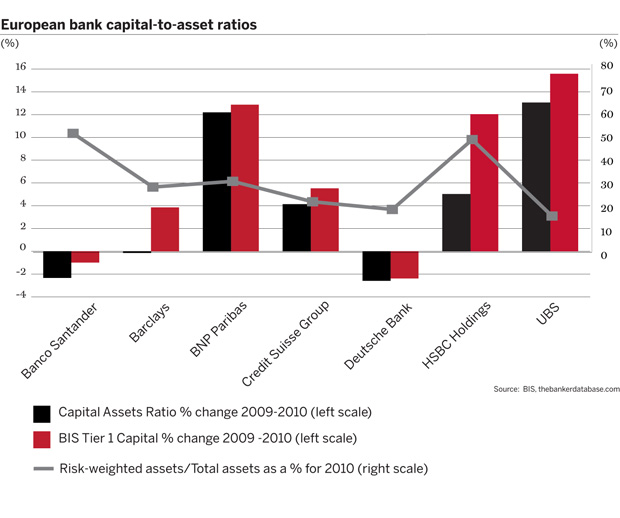As banks gear up for Basel III, risk-weighted assets (RWAs) have become ever more relevant for banks. Because BIS capital ratios are defined as a percentage of RWAs to total assets (TAs), banks see optimisation of their risk profile as crucial in order to avoid a large increase in capital charges.
The actual risk-weighting calibration still varies widely between banks. Differences in RWA-to-TA ratios of different banks can be explained by differences in risk profiles between banks, but also by the discretionary nature of methodologies to calculate RWAs. Differences in these ratios can be very large; with Santander and HSBC’s RWA-to-TA ratio for full-year 2010 higher than 50%, while Barclays, UBS and Deutsche Bank have RWA ratios lower than 20% of their TAs. If 80% of these banks' balance sheets are considered as ‘risk-free’, then the correlation between BIS Tier 1 ratios and pure leverage decreases.
Regulators are well aware of these disparities, which is why the Basel III drafts include a minimum capital ratio, not based on RWAs but on the total net exposure of the bank, which will be capped at a minimum of 3%. But unlike risk-weighted capital ratios, which will begin to be phased-in 2013, maximum leverage ratios will only be implemented in 2018.
Watch out for the Top1000 World Banks 2011 for extended analysis on worldwide leverage and capital ratios.



